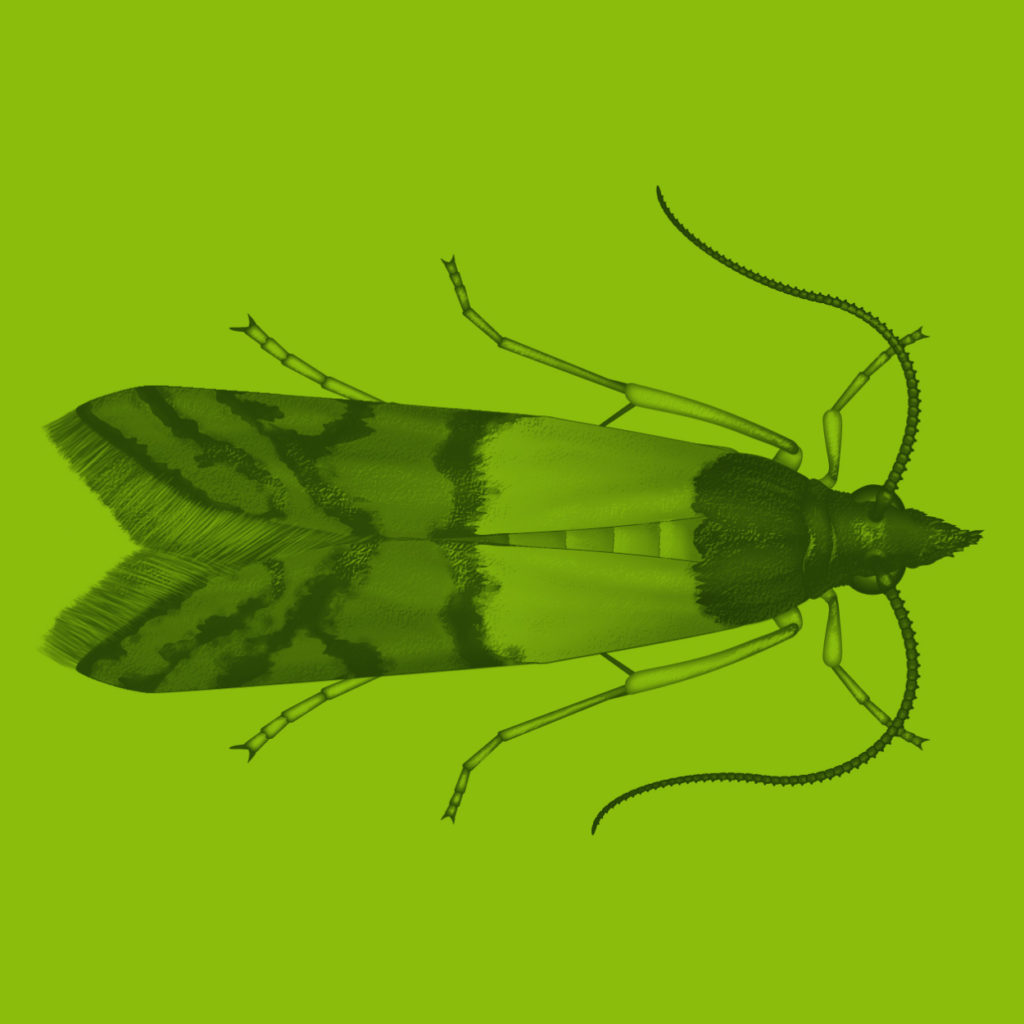Food moth
(Plodia Interpunctella)
The food moth (dörrobstmotte) is 4 to 12 mm long and has a copper-red head. Also the rear part of the front wing is so colored, the front part is light gray. The wings are folded over the back like roof. The larvae are 14 to 17 mm in size and look pure white, light pink, yellowish or greenish depending on the food.

Prevention tips
Vulnerable food …
- should be checked for moths and their larvae already upon purchasing and then later on a regular basis
- should not be left standing open for longer periods of time
- should be stored in tightly closed containers and at temperatures below 10°C
- should be reliably disposed of in case of infestation
Diet
The adult moth does not absorb food and thus does no harm – in contrast to the larvae: they eat foods from cereals or corn, nuts, almonds, dried fruit, chocolate, biscuits, dog flakes, tea and spices, and many ohter foods.
With spun and their faeces, they pollute and devalue them and make them unappetizing.
However, they are not harmful to health and do not transmit diseases.
Life
In our latitudes, the animals outside buildings can only reproduce to a limited extent. However, they can enter apartments from the outside through ventilation and prints. Most of the time, the eggs are introduced by food.
Benefits
Food moths are part of food webs and therefore an important food source for other insects and spiders.
By mining organic material, they also bring it back into the ecological cycle and thus contribute to soil fertility.